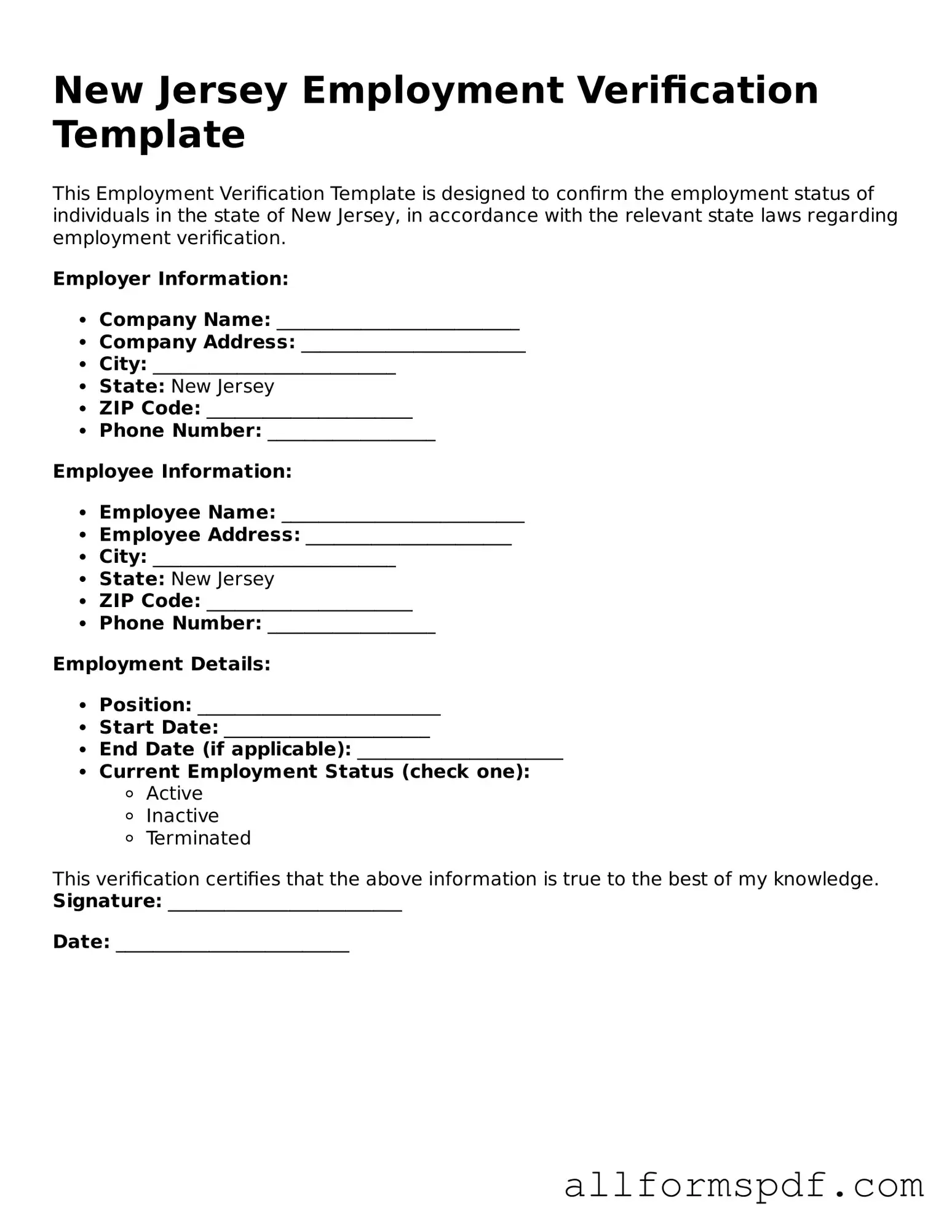Filling out the New Jersey Employment Verification form may seem straightforward, but many individuals stumble upon common pitfalls that can lead to delays or complications. One of the most frequent mistakes is providing incomplete information. When sections of the form are left blank, it can create confusion and result in unnecessary follow-up requests. Always ensure that every required field is filled out accurately.
Another common error involves the misrepresentation of employment dates. It's crucial to double-check the start and end dates of employment. Incorrect dates can raise red flags and may even jeopardize a person's eligibility for certain benefits. Accuracy in this area is essential to maintain credibility.
Additionally, people often overlook the importance of using the correct job title. A job title should reflect the position held during the employment period. Mislabeling one's role may lead to misunderstandings about the nature of the work performed, which can affect the verification process.
Many individuals also fail to provide the necessary contact information for their previous employers. Without accurate phone numbers or email addresses, the verification process can stall. Including up-to-date contact details ensures that the verification can be completed smoothly and efficiently.
Another mistake is neglecting to sign and date the form. A signature is not merely a formality; it confirms that the information provided is true and accurate. Submitting an unsigned form can lead to immediate rejection or delays in processing.
Some people may also mistakenly assume that all documentation is unnecessary. While the form itself is crucial, supporting documents such as pay stubs or tax forms can enhance the verification process. Providing these additional materials can help clarify any discrepancies and speed up the overall procedure.
Inaccurate spelling of names or addresses is yet another frequent error. Simple typos can create significant obstacles in the verification process. It's advisable to review all entries carefully, ensuring that every detail is correct.
Moreover, failing to follow the specific instructions provided with the form can lead to complications. Each form may have unique requirements, and overlooking these can result in the submission being deemed invalid. Always read the instructions thoroughly before completing the form.
Lastly, not keeping a copy of the submitted form can be a mistake. Having a record of what was submitted can be invaluable in case any questions or issues arise later. It serves as a reference point and can simplify future communications regarding employment verification.
